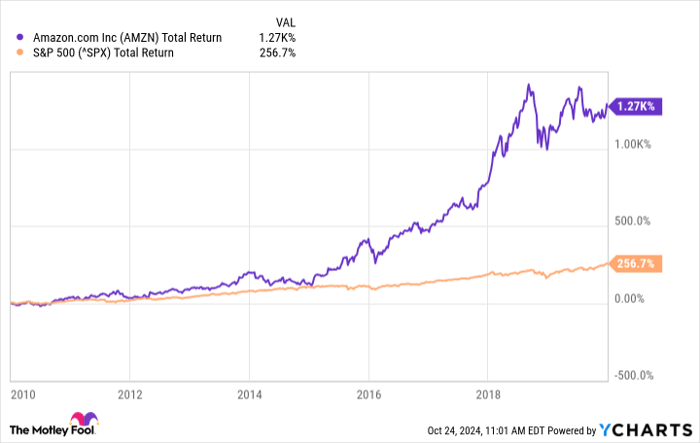Determining the value of a rental property is a critical task for both experienced investors and those new to the real estate market. However, this process is not as straightforward as it may seem. Various methods and factors must be considered to arrive at an accurate valuation.
In this article, we will explore the different approaches used to value rental properties and emphasize the importance of understanding these concepts for successful real estate investment.
The Sales Comparison Approach, the Capital Asset Pricing Model (CAPM), the Income Approach, and the Gross Rent Multiplier (GRM) Approach are among the common methods utilized. Additionally, the Cost Approach can be valuable for properties with vacant land or special use.
It is crucial to evaluate factors like location, property age, crime rates, and future rental incomes and expenses. By gaining a comprehensive understanding of the valuation process and working with certified appraisers or real estate agents, investors can make informed decisions and mitigate risks.
This article aims to provide valuable insights and resources for unlocking the secrets to accurately valuing rental properties.
Key Takeaways
- There are multiple approaches to valuing rental properties, including the Sales Comparison Approach, CAPM, Income Approach, and GRM Approach.
- The Cost Approach is frequently used for valuing vacant land and considers the highest and best use of the property.
- Learning valuation concepts is important for real estate investment, and using mortgage calculators can aid in evaluating rental properties.
- Factors to consider in valuing rental properties include location, property age, crime rates, future rental incomes and expenses, and the net present value of money.
Approaches for Valuing Rental Properties
When valuing rental properties, there are several approaches that can be used.
The Sales Comparison Approach involves comparing similar properties that have recently sold or rented in the local area, considering attributes such as number of bedrooms, bathrooms, and price per square foot.
The Capital Asset Pricing Model (CAPM) takes into account the potential return on investment (ROI) from rental income and compares it to other risk-free investments, considering the risks associated with renting real property.
The Income Approach focuses on the potential income generated by the rental property relative to the initial investment, taking into account annual capitalization rate and future rental incomes and expenses.
The Gross Rent Multiplier (GRM) Approach values rental property based on the annual rent collected, using gross rent instead of net operating income and comparing GRMs and rental incomes of similar properties in the area.
It is important to consider factors such as location, property age, and crime rates when assessing risks and potential returns.
Common mistakes to avoid include not considering future rental incomes and expenses in the calculations and not working with certified appraisers or real estate agents to ensure accurate valuations.
The Sales Comparison Approach
The Sales Comparison Approach is a widely used method for valuing rental properties. It involves comparing rental prices of similar properties that have recently sold or rented in the local market. This approach evaluates the local market by considering attributes such as number of bedrooms, bathrooms, and price per square foot.
By analyzing these factors, investors can make informed decisions about the value of a rental property. This approach allows for a detailed comparison of rental prices in the area, providing a clear picture of the property's market value.
The Capital Asset Pricing Model (CAPM)
To further analyze the value of a rental property, investors can utilize the Capital Asset Pricing Model (CAPM), which considers the potential return on investment (ROI) from rental income and compares it to other risk-free investments, taking into account the associated risks of renting real property.
The CAPM calculates the expected return on a rental property by factoring in the risk-free rate, the property's beta, and the market risk premium.
The risk-free rate represents the return an investor would expect from a risk-free investment, such as a government bond.
The property's beta measures its sensitivity to market fluctuations, with higher betas indicating higher risk.
The market risk premium is the additional return investors demand for taking on the risk of investing in the market.
The Income Approach
Continuing the analysis from the previous subtopic, investors frequently utilize the Income Approach to determine the value of a rental property. This approach focuses on the potential income generated by the property relative to the initial investment.
To paint a picture for the audience, here are two sub-lists:
Calculating rental yield:
- Rental yield is a key metric in the Income Approach and is calculated by dividing the annual rental income by the property's value.
- It helps investors understand the return they can expect from their investment and compare different rental properties.
Evaluating rental market demand:
- Assessing rental market demand is crucial in the Income Approach as it helps determine the potential rental income.
- Factors such as location, property amenities, local economic conditions, and demographic trends should be considered to evaluate the demand for rental properties in a specific area.
Gross Rent Multiplier (GRM) Approach
The Gross Rent Multiplier (GRM) approach is a valuable method for determining the value of a rental property based on its annual rent collected. This approach is particularly useful when calculating rental property value and determining market rental rates. The GRM is calculated by dividing the property's sale price by its gross annual rental income. It provides a quick and simple way to estimate the value of a property without considering operating expenses. Here is an example of how the GRM can be used:
| Property | Sale Price | Gross Annual Rental Income | Gross Rent Multiplier (GRM) |
|---|---|---|---|
| Property A | $500,000 | $50,000 | 10 |
| Property B | $400,000 | $40,000 | 10 |
In this example, both properties have a GRM of 10, indicating that they are valued at 10 times their gross annual rental income. By comparing the GRMs and rental incomes of similar properties in the area, investors can make informed decisions about the value of a rental property.
Combination of Valuation Methods
A comprehensive approach to valuing rental properties involves combining multiple valuation methods to gain a more accurate understanding of the property's worth. By utilizing a combination of valuation methods, investors can calculate rental property value more effectively and evaluate rental property risks more comprehensively.
Here are two key reasons why combining valuation methods is essential:
- Calculation of Rental Property Value:
- The combination of valuation methods allows investors to consider different factors such as recent sales data, rental income potential, and market trends.
- By analyzing various valuation approaches, investors can obtain a more balanced and reliable estimate of the property's value.
- Evaluation of Rental Property Risks:
- Different valuation methods provide insights into different aspects of rental property risks, including market volatility, potential vacancies, and maintenance costs.
- By considering multiple valuation methods, investors can assess the potential risks associated with the property and make more informed investment decisions.
The Cost Approach
To thoroughly evaluate the value of a rental property, it is imperative to consider the Cost Approach in conjunction with other valuation methods.
The Cost Approach determines the property value based on its reasonable use and takes into account the combination of land value and depreciated value of improvements. This approach is particularly reliable for newer structures and special use properties.
However, property zoning can impact the value if it is not zoned for the intended use. Therefore, it is essential to consider any zoning restrictions that may affect the property's value.
Additionally, the Cost Approach is useful for valuing vacant land and determining its highest and best use. By considering property improvements and the zoning impact, investors can gain a more comprehensive understanding of a rental property's value.
Importance of Learning Valuation Concepts for Real Estate Investment
Understanding valuation concepts is crucial for real estate investors to make informed investment decisions and accurately assess the value of a rental property. Here are two key reasons why learning valuation concepts is important for real estate investment:
- Inflation Risks: Valuation concepts help investors account for the impact of inflation on rental property values. By considering factors such as future rental incomes and expenses, including mortgage interest and inflation, investors can make more accurate calculations and projections. The net present value of money, or discounted cash flow, is used to account for inflationary and deflationary risks.
- Impact of Property Zoning: Property zoning can significantly impact the value of a rental property. If a property is not zoned for its intended use, its value may be affected. Investors need to understand zoning regulations and consider them when assessing the value of a rental property.
Frequently Asked Questions
How Can Property Zoning Impact the Value of a Rental Property?
Property zoning can impact the value of a rental property by restricting or permitting certain uses. If the property is not zoned for the intended use, it may limit the potential rental income and attractiveness to tenants, thereby affecting its overall value.
What Factors Should Be Considered When Assessing the Risks and Potential Returns of a Rental Property?
Factors to consider when assessing the risks and potential returns of a rental property include market demand, location, property condition, rental rates, competition, and local regulations. Thorough evaluation of these factors is crucial for informed investment decisions.
How Is the Net Present Value of Money Used in Valuing Rental Properties?
The net present value of money is used in valuing rental properties by accounting for inflationary and deflationary risks. Accurate calculation is essential to determine the property's current and future cash flows. Common mistakes include incorrect discount rates or excluding relevant expenses.
How Can the Gross Rent Multiplier (Grm) Be Used to Estimate the Market Value of a Property?
The Gross Rent Multiplier (GRM) is a valuation method used to estimate the market value of a rental property. It is calculated by dividing the property's sale price by its gross rental income. However, it has limitations and should be used in conjunction with other valuation techniques.
What Resources Are Available for Real Estate Investors to Ensure Accurate Valuations and Avoid Fraudulent Appraisals?
Real estate investors can ensure accurate valuations and avoid fraudulent appraisals by utilizing real estate appraisal tools and conducting thorough property inspections. These resources provide objective and detailed information for informed investment decisions.




Can you be more specific about the content of your article? After reading it, I still have some doubts. Hope you can help me.
Can you be more specific about the content of your article? After reading it, I still have some doubts. Hope you can help me.
I don’t think the title of your article matches the content lol. Just kidding, mainly because I had some doubts after reading the article.
Thanks for sharing. I read many of your blog posts, cool, your blog is very good.
Thank you for your sharing. I am worried that I lack creative ideas. It is your article that makes me full of hope. Thank you. But, I have a question, can you help me?
Thank you for your sharing. I am worried that I lack creative ideas. It is your article that makes me full of hope. Thank you. But, I have a question, can you help me?
I don’t think the title of your article matches the content lol. Just kidding, mainly because I had some doubts after reading the article.
Thank you for your sharing. I am worried that I lack creative ideas. It is your article that makes me full of hope. Thank you. But, I have a question, can you help me?
Thank you for your sharing. I am worried that I lack creative ideas. It is your article that makes me full of hope. Thank you. But, I have a question, can you help me?
Can you be more specific about the content of your article? After reading it, I still have some doubts. Hope you can help me.
Rattling superb information can be found on website.Money from blog
Thanks for sharing. I read many of your blog posts, cool, your blog is very good.
Thank you for your sharing. I am worried that I lack creative ideas. It is your article that makes me full of hope. Thank you. But, I have a question, can you help me?
Thanks for sharing. I read many of your blog posts, cool, your blog is very good.
Your point of view caught my eye and was very interesting. Thanks. I have a question for you.
Thank you for your sharing. I am worried that I lack creative ideas. It is your article that makes me full of hope. Thank you. But, I have a question, can you help me?
I don’t think the title of your article matches the content lol. Just kidding, mainly because I had some doubts after reading the article. https://www.binance.com/sl/register?ref=OMM3XK51
Can you be more specific about the content of your article? After reading it, I still have some doubts. Hope you can help me.
Your article helped me a lot, is there any more related content? Thanks! https://accounts.binance.com/zh-TC/register?ref=VDVEQ78S